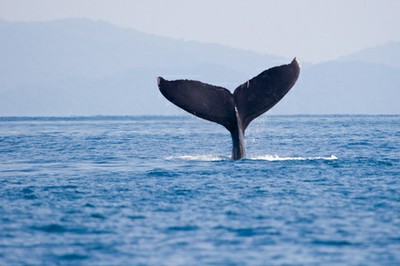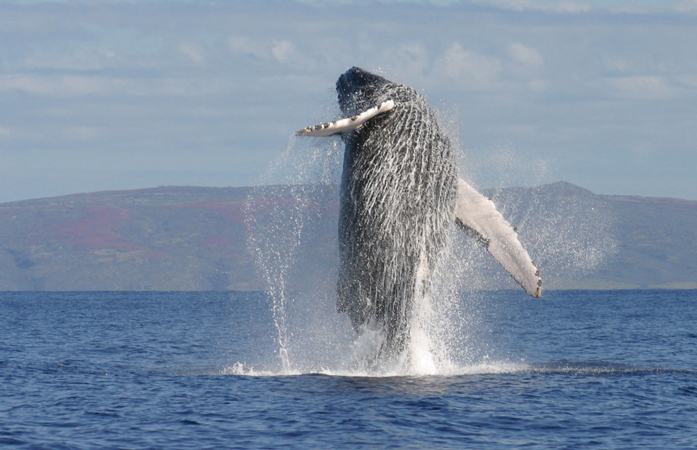Costa Rica Travel News – In three years, the number of foreign tourists coming to Costa Rica to see humpback whales has tripled. In 2010, visitors totaled 43,302; in 2013, however, a huge total of 131,373 visitors were recorded.
 These figures were validated by the Costa Rican Institute for Tourism (ICT) after analyzing the results of a number of surveys given to foreign travelers in Juan Santamaría Airport, in Alajuela, and in Daniel Oduber Airport in Liberia.
These figures were validated by the Costa Rican Institute for Tourism (ICT) after analyzing the results of a number of surveys given to foreign travelers in Juan Santamaría Airport, in Alajuela, and in Daniel Oduber Airport in Liberia.
Costa Rica is the only place in the world where you can find two distinct populations of humpback whale (Megaptera novaeangliae). While one group, native to Baja California (Mexico) reaches Guanacaste between December and March, a second species of whales from Antarctica migrates to the warmer waters of Osa between July and October.
According to Frank Garita, a biologist and representative for the Costa Rican Coalition for Whales, the country has a number of characteristics which encourage these enormous cetaceans so reproduce and care for their young.
For the Minister for Tourism, Wilhelm von Breymann, this natural particularity is also what promoted whale-watching as a tourist activity.
In the South Pacific, von Breymann exemplifies, whale-watching has led to a sort of chain reaction which is not only beneficial to tourism operators, but also for small hotels, restaurants, transport services and other businesses in a more indirect process, such as the sale of artisan goods.
Whale Bay. A community which has always understood that conservation can be a catalyst for development is Bahía Ballena, in the Osa canton.
In fact, around 90% of the local economy depends on whale-watching and other eco-tourism activities. “For us, conservation is great business. It allows us to generate resources for the community and for new businesses to grow and thrive”, said Fernando Guerrero, from the Association of Tourism Operators in Bahía Ballena (Asotur).
Indeed, Guerrero and his colleagues are preparing to welcome tourists to the 6th Dolphin and Whale Festival, taking place this weekend. The event is organised to increase awareness and to promote non-lethal treatment of cetaceans.
Although the principal attraction will be the guided tours, the festival also offers a number of activities such as walks, athletics competitions, mountain biking and a host of other options for things to do.
Translated by Leh Hendre from La Nacion

